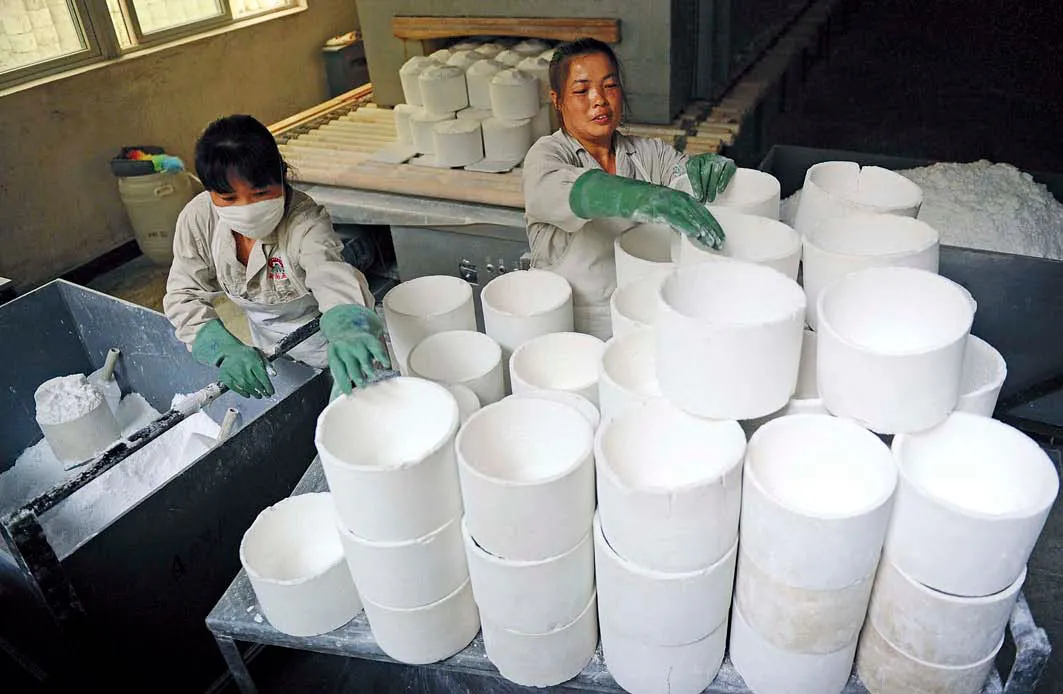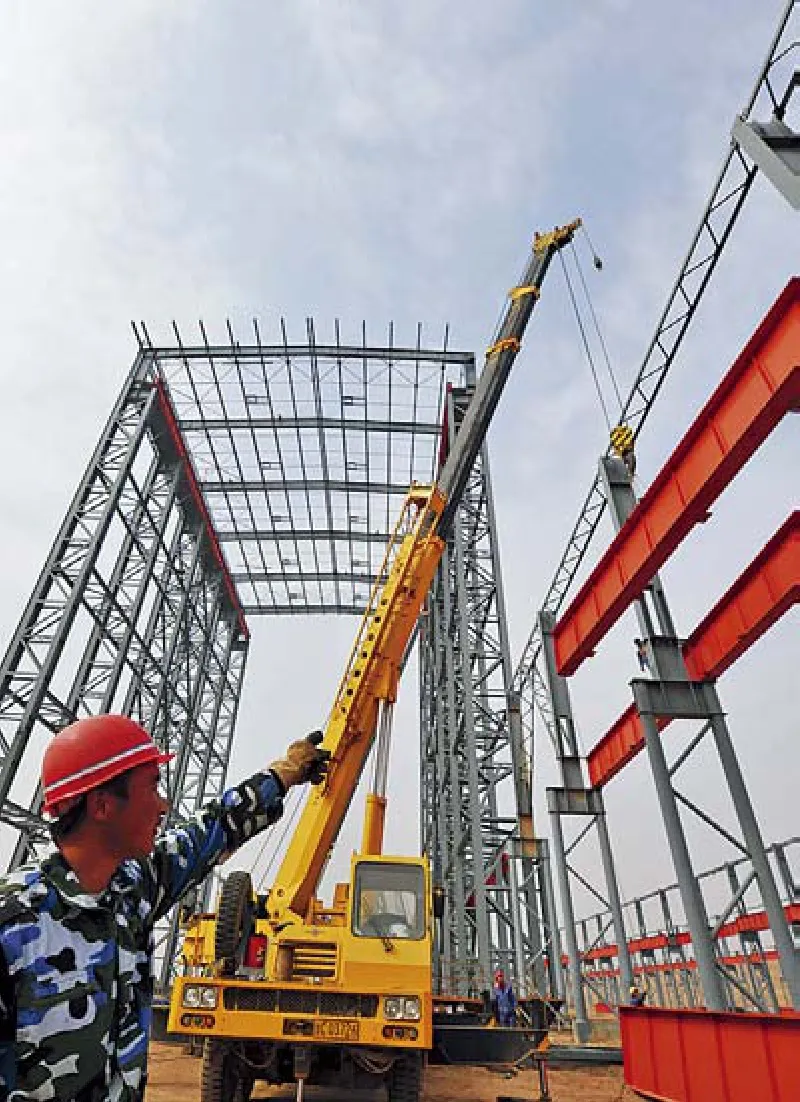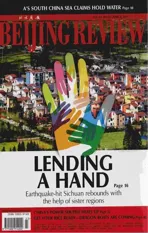Rare Power
2011-10-14ByHUYUE
By HU YUE
Rare Power
By HU YUE

ZhOU KE
China begins to reinvigorate the rare earth industry after decades of underselling the valuable metals
On May 19, the State Council released Guidelines to Promote Sustainable and Sound Development of the Rare Earth Industry, delivering a strong boost to the fragmented industry.
Rare earth elements, a collection of 17 elements, are among the most soughtafter materials for modern manufacturing. Their unique magnetic and phosphorescent properties make them vital ingredients in sophisticated hi-tech devices like batteries, magnets, wind turbines, cellphones, electric cars and flat-screen televisions. However, mining and smelting the elements are diffcult and costly.
The world now relies on China to meet more than 90 percent of its needs for rare earth metals, even though the country’s reserves account for about only one third of the global total. However, over-expansion has left China in a dire situation with sharply reduced reserves, illegal mining, environmental damage and disorder in exports.
“These acute woes have cast an ominous shadow over the sector’s growth prospect,”said the State Council. “That has placed an onus on the country to streamline the fragmented sector and stabilize its growth pattern.”
As a result, the Chinese Government pledged to keep rare earth mining under control and continue with the current export quota system. It also vowed to suspend issuance of new licenses for rare earth production and launch a crackdown on illegal mining and mineral smuggling,
Prior to this, the Ministry of Land and Resources in March ordered to cap nationwide rare earth production under 93,800 tons for 2011, slightly up 5.15 percent from the previous year. Besides, the Ministry of Commerce (MOFCOM) in late 2010 announced to set an export quota at 14,446 tons for the frst half of 2011, down 11.4 percent from a year ago.
The conservation efforts are fully warranted. China may run out of rare earth metals in 15 to 20 years if the current wave of rampant domestic mining continues,” said Chao Ning, Director of the Industrial Products Section of MOFCOM Foreign Trade Department. “While China is exhausting its limited resources, many Western countries are leaving their mines untouched.”
As traditional mining techniques are destructive to forests, soil and farmland, the State Council’s circular said the government will phase out outdated and polluting mining methods and encourage enterprises to upgrade their technologies.
Also, for the frst time, the country made plans to create a national strategic reserve of rare earth. Without government approval, no company is allowed to explore deposits in these reserved zones. But affected enterprises could receive government subsidies as compensation.
Moreover, policymakers also pledged hikes in the resource tax on rare earth, an effort to put prices at a reasonable level. In April, the Ministry of Finance ordered increases to the resource tax rates of 60 yuan ($9.2) per ton for light rare earths and 30 yuan ($4.6) for mid-heavy rare earths.
“This move will beneft the industry over the long term, though it causes cost inflation to manufacturers,” said Zhang Anwen, Deputy Secretary-General of the Chinese Society of Rare Earths
After flooding the world with cheap rare earths for more than a decade, China is seeking to regain its pricing power of the commodity, he said.
Heng Kun, a senior analyst with the Essence Securities Co. Ltd., said the guidelines sent a clear signal that China is determined to push forward a sweeping industry reshuffle, despite international clamor that accuses China of hoarding these resources.
“The key is ensuring the adequate implementation of those measures,” said Wang Guozhen, a rare earth expert and former deputy director of China Non-Ferrous Engineering and Research Institute (ENFI).“The efforts may be watered down as local governments bump up output.”
In 2009, China produced 120,000 tons of rare earth, well above the government-set ceiling of 82,300 tons.
Consolidation underway
A focus of the government measures was to consolidate the highly fragmented industry and sharpen its competitive edge.
With demands for rare earth surging in the 1990s, thousands of mines sprouted up across the country, engaging in reckless mining and illicit production. As small companies vied for export deals, the valuable minerals were sold at amazingly low prices. In 2009, China’s rare earth export increased 16.67 percent from the year before, but the value dropped 34.92 percent, according to MOFCOM data.

LIU QUANLONG
“As an effort to reorganize the crowded industry, the government will set tougher standards for companies in terms of energy efficiency and emissions,” said the State Council, in the circular.
“The rules are likely to drive nearly 90 percent of smaller companies out of the market,” said Zong Zijiu, a professor with ENFI.“The government will likely allow another two or three years for them to improve their techniques. Those who cannot meet the requirements will be forced to shut down.”
In another move, policymakers will encourage mergers and acquisition in the sector and sharply reduce the number of miners and smelters, said the circular.
The short-term goal is to allow top three producers to control 80 percent of the ionadsorbed rare earth industry in south China, it added.
In northern regions, the Inner Mongolia Baotou Steel Rare Earth Hi-Tech Co. Ltd. has gained market monopoly, with its output accounting for 40 percent of the nation’s total. In the latest attempt to extend its reach, the company in April acquired a 66.7-percent stake in the Baotou Huamei Rare-Earth High-Tech Co. Ltd., China’s largest manufacturer of rare earth carbonates.
The southern markets, however, are more fragmented, with several companies competing for a dominant position.
Centrally administered state-owned companies like China Minmetals Corp. and Aluminum Corp. of China Ltd. are making a push into the market of south Jiangxi Province, which controls 70 percent of the country’s ion-adsorbed rare earth deposits.
“The behemoths glitter with advanced smelting and processing techniques, but their forays are hindered by limited access to resources,” said Yuan Zhibin, a researcher with the Shenzhen-based research institute CIConsulting. “The local player Ganzhou Rare Earth Mineral Industry Co. Ltd., supported by the local government, has monopolized the resources.”
With rare earth prices creeping up, local governments and private players may resist consolidation and protect local deposits that are now viewed as more proftable, said Sang Yongliang, an analyst with the Guotai Jun’an Securities Co. Ltd.
“To solve the dilemma, policymakers need to fnd ways to strike a balance between central and local interests,” he said.
The road ahead
The government-precipitated industry restructuring is forcing up rare earth prices. From January to April, average prices of 17 elements have almost doubled as demands boomed and supplies tightened, according to data from Cre.net, a major rare earth information site.
In February, prices of China’s rare earth for export averaged $109,036 a ton, skyrocketing nine fold from a year ago, said the General Administration of Customs.
“As rare earths are integral to a number of hi-tech products, demands for such strategic minerals are bound to shoot up,”said Li Junfeng, Deputy Director of the Energy Research Institute under the National Development and Reform Commission.“Meanwhile, unscrupulous speculators are hoarding the minerals, blowing up a price bubble.”
The price infation brought windfall profits to miners, but for downstream processors, it came as a deadly blow.
“We are struggling to make ends meet due to the severe costs infation,” said Tang Yinxuan, Chairman of Daming Fluorescent Material Co. Ltd., a Hangzhou-based manufacturer of fuorescent from rare earths. “We are less able to pass the increased costs on to customers due to fierce competition. More disturbing, though, is the fact that upstream producers have cut back on supplies of raw materials, expecting to capitalize on price surges.”
In response, the government is determined to strengthen supervision over the sector and strike hard against speculation, said Dou Xuehong, a senior researcher at the Baotou Research Institute of Rare Earth.
Looking ahead, the international investment bank Goldman Sachs predicted that the price boom is nearing its end, as Western companies start up new mines to compete with Chinese frms.
“The supply deficit will peak this year before the market slips into a slight surplus in 2013. The prices will likely continue to rise initially, but may moderate by 2015,”said Malcolm Southwood, an analyst with Goldman Sachs.
The U.S. company Molycorp. Minerals LLC. recently reopened a mine that was closed in 2002, and is expected to produce 20,000 tons of rare earth annually.
Meanwhile, the Australian miner Lynas Corp. is in the process of building a rare earth refinery in Malaysia and plans to develop new deposits in the southeast African country Malawi. In addition, state-run Japan Oil, Gas and Metals National Corp. in February 2011 joined hands with a company in Uzbekistan to explore a rare earth mine in the Central Asian nation.

